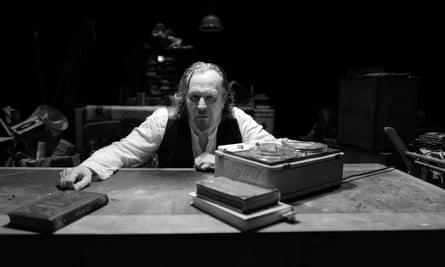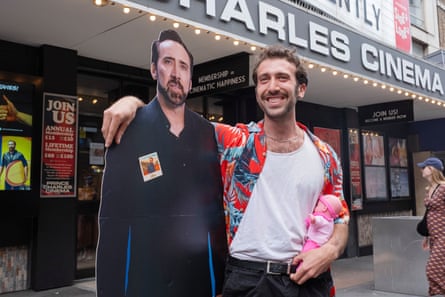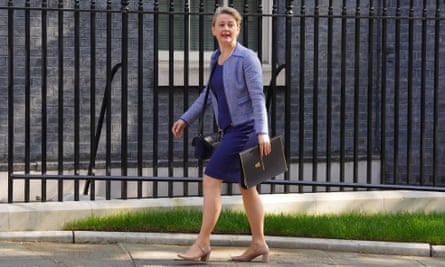Ernest Borgnine had the sort of face that suggested he was never young – or, at the very least, that he always looked older than he was. In truth, Borgnine didn’t get his start as a screen actor until his early-to-mid 30s, having spent his young adulthood serving in the navy after high school and re-enlisting after the attack on Pearl Harbor. With his stocky figure and boisterous gap-toothed grin, Borgnine had no conventional leading-man qualities, yet his unique magnetism made him an unlikely star, someone who could play tough guys or working stiffs with broad relatability. He was the people’s star.
Borgnine hadn’t been in movies very long when he took the title role in Marty as a pug-ugly butcher who’s 34, still lives with his widowed mother in The Bronx and has all but given up on the prospect of marriage. To say the part resonated with viewers would be a understatement: Marty won both the first-ever Palme d’Or and best picture Oscar, and Borgnine won best actor for a performance that spoke (and still speaks) to the yearning of lonely souls who have a lot of love to give, but need someone to discover it. There’s a sweaty earnestness to Borgnine here that’s completely winning, because he’s incapable of playing it cool or disguising his inexperience. He can only be himself.
Scripted by Paddy Chayefsky – he also won an Oscar, and added two more later with The Hospital and Network – Marty was a teleplay before it became a movie, and it emphasizes much of the grimy naturalism brought to TV in the early 50s. Stripping away the gloss of studio productions, director Delbert Mann brought the action out into the open as much as possible, with real Bronx locations that underlined the modesty and insularity of his hero’s world. The year 1955 was quietly one of the greatest years in film history – according to me, anyway – and Marty was part of a transition in screen realism, with Borgnine making his own contribution while James Dean was galvanizing audiences with Rebel Without a Cause and East of Eden. He was the opposite of a matinee idol.
There’s an immediately touching affability to Borgnine’s Marty as he cheerfully greets customers at the butcher shop, despite nearly every one of them reminding him that he’s a loser for not being married. Two tell him he should be ashamed of himself and the abuse seems to wash over him like white noise, because he’s internalized it so deeply. When he and his buddy Angie (Joe Mantell), another hopeless case, talk about what to do on a Friday, it’s easier to retreat to another night sucking down beers in front of the television than face another round of rejections. It’s only after Marty’s married brother Tommy (Jerry Paris) suggests the Stardust Ballroom to their mother as a good meeting place that he’s goaded into trying again. (His mom’s encouraging pitch: “It’s loaded with tomatoes!”)
Braced for another excruciating night of polite refusals, his fortunes shift at the Stardust when he discovers a figure who’s even shier and more pitiable than he is. Shortly after Clara (Betsy Blair), a plain-featured high school science teacher, arrives at the club on a blind date, Marty notices her crying alone at a table, abandoned by a smug bachelor who didn’t bother to hide his contempt for her. He asks her to dance and she obliges, and the two start having a conversation that’s remarkably intimate for a couple of strangers. Clara talks about a time when she came to the Stardust alone, sat in the same spot for an hour and a half without getting any attention, and then cried. “I cry a lot, too,” says Marty, sympathetically. “I’m a big crier.”
The heartrending allure of the film is reflected in that exchange and the scenes that follow. Marty and Clara are socially inept, incapable of disguising their desires or vulnerabilities or suggesting some image of themselves that’s more glamorous than the real thing. Their relationship feels breathlessly accelerated, so much so that Clara refuses an awkward first kiss attempt from Marty because she’s too overwhelmed to process it. There’s almost a sense that they could get engaged that very same night if the people around them — the same sort of people shaming Marty for being single – weren’t discouraging him for seeing such “a dog”.
![MARTY black-and-white photo of two men in suits and three women in dresses[US 1955] ERNEST BORGNINE, JOE MANTbELL](https://californiaminorityalliance.com/wp-content/uploads/2025/04/marty-at-70-the-underdog-best-picture-winner-remains-hard-to-resist.jpg)
Around the edges of Marty, Chayevsky and Mann also give a generous amount of time to Esther Minciotti as Marty’s mother Teresa and Augusta Ciolli as his aunt, who’s become such a pill around Tommy, his wife and their toddler that Tommy is begging Teresa to take her sister away. Much like Tokyo Story from two years before, the older women are struggling to figure out their place among grown children who don’t necessarily want them around. Perhaps their Italian roots raised them with the expectation that they would always stay close to their immediate family, but US culture is telling something else.
The smallness of Marty suits the man at its center, and it gives an underdog quality to the film itself, which wouldn’t seem to have the scale to win all the awards it did, much less be remembered so fondly 70 years later. But that same formula explains how Sylvester Stallone would triumph in 1976 with Rocky, another story that hinges on the romance between a working-class brute and the shy, sweet-natured woman who draws his affection. Just as Rocky isn’t as formidable as the murderer’s row of classics it beat the Oscars (All the President’s Men, Network, Taxi Driver and Bound for Glory), Marty doesn’t tend to get the same respect as a work of art. It’ll just have settle for being loved.
Source: theguardian.com





















